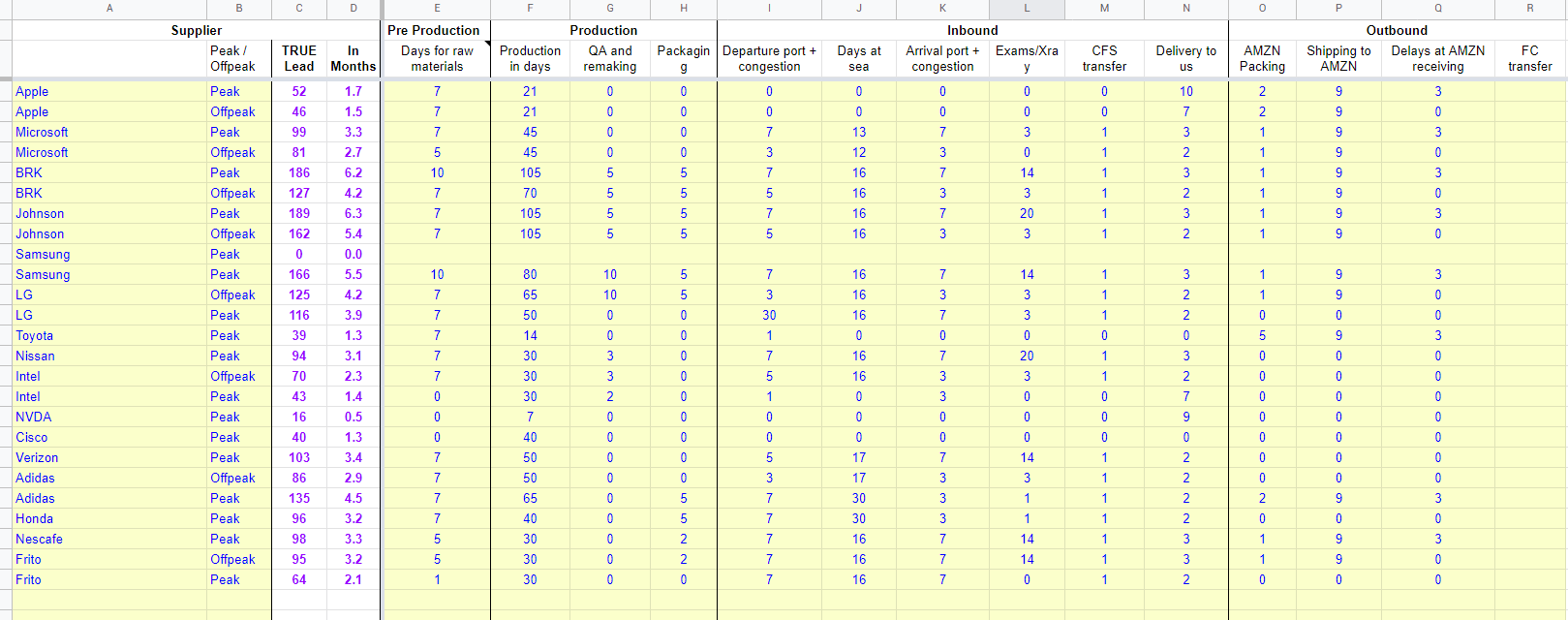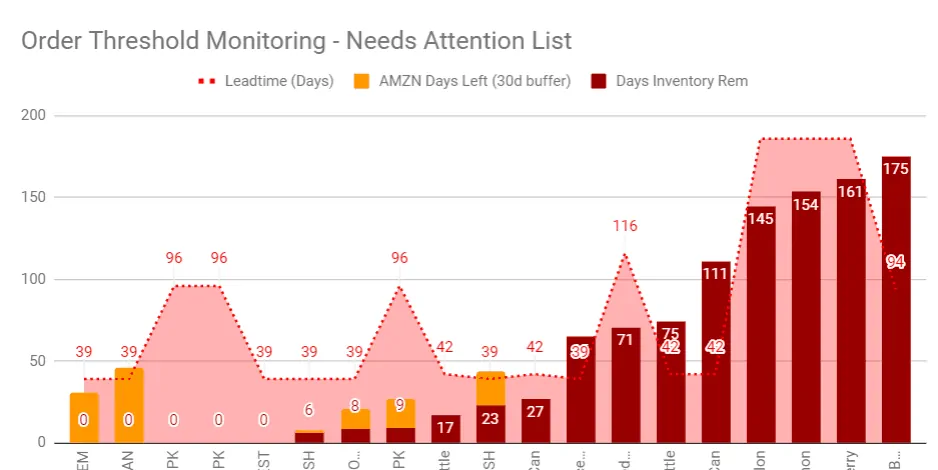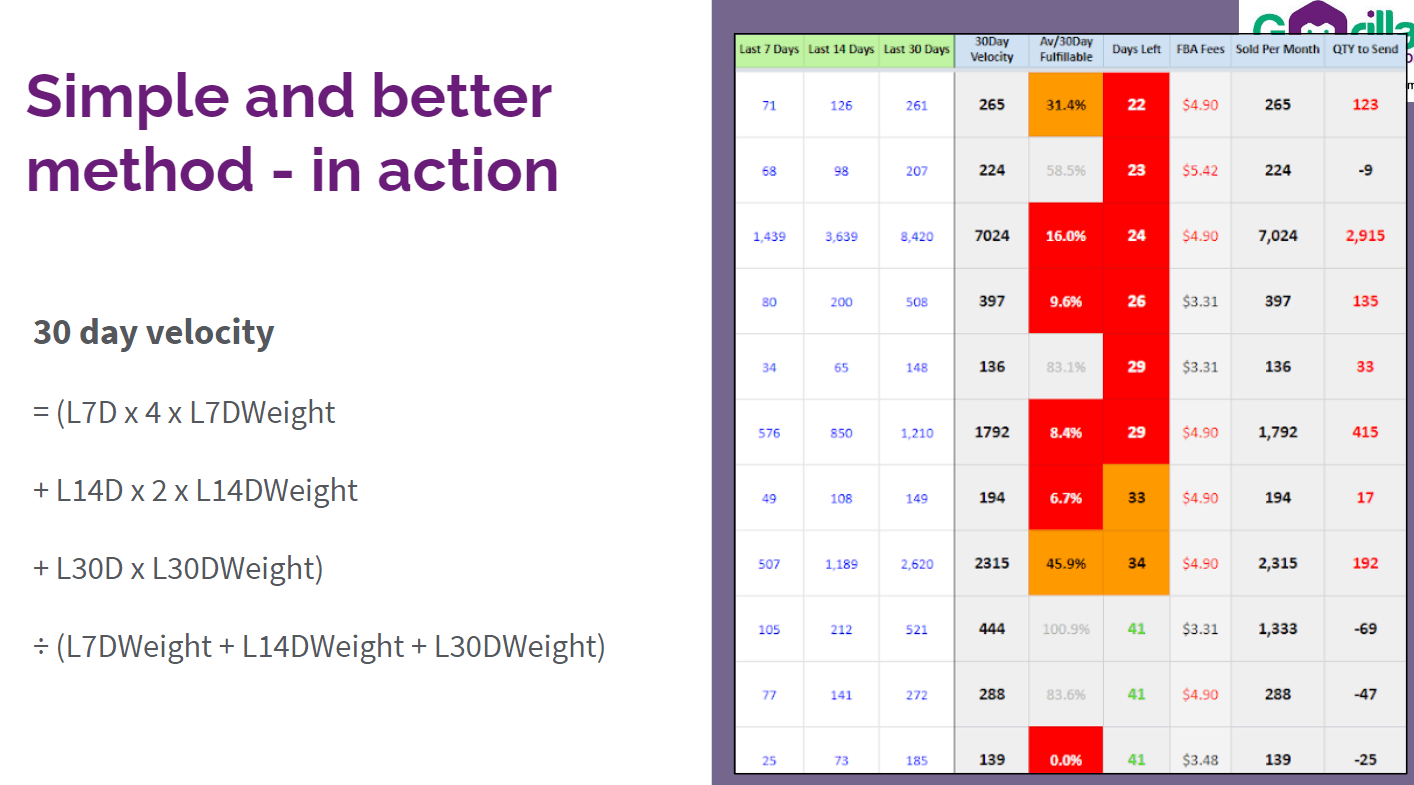Article Summary (TL;DR)
✅ Strong Amazon supply chain management (SCM) is crucial for seller success. It minimizes stockouts, avoids missed sales, and maintains a competitive edge.
✅ Adapting to disruptions (e.g., pandemics, port delays) by having multiple suppliers and backup plans.
✅ Have backups for suppliers, freight forwarders, and crucial operations to minimize downtime.
This guide is for Amazon sellers looking for ideas and strategies to improve their Amazon supply chain management.
This is NOT an article about the basics of Amazon’s SCM like fulfillment centers, delivery, manufacturing. Watch this talk by Tim Collins on Amazon’s supply chain point of view.
Or if you are looking for Amazon supply chain jobs, then look here.
BUT, if you are searching for in-depth advanced discussion and strategies by a 7 figure seller related to creating your OWN Amazon supply chain strategy and ways to improve, keep reading.
What you’ll learn
- Real end-to-end supply chain management for Amazon sellers
- Why you should create a flexible and redundant supply chain
- How purchasing should be involved in SCM
- How to stay ahead of the competition
The seller’s guide to Amazon supply chain management
The typical Amazon supply chain diagram and model you learn about is limited to:
- Manufacturing
- Warehousing
- Delivery
From a seller’s point of view, this is missing one-third of the entire supply chain picture and will lead to big losses if anything outside of the ordinary happens.
When COVID hit, 9 out of 10 Amazon businesses ran out of stock and got caught with their pants down because their supply chain management was too simplistic.
Here’s a detailed end-to-end Amazon supply chain model for Amazon sellers to consider.
This skeleton alone should help your Amazon business. I won’t go into the details of every part because it’s done for you in the lead time calculator discussion.
- Is it peak or off-peak?
- Demand forecasting
- Forecast demand
- Factor in spikes
- Safety stock
- Manufacturing
- Days for raw materials
- Production time
- QA and remaking
- Packaging
- Inbound logistics
- Departure port + congestion
- Days at sea/air
- Arrival port + congestion
- Exams/Xray
- CFS transfer
- Delivery to a 3PL or local warehouse
- Outbound logistics
- Repacking for Amazon
- Shipping to Amazon FC
- Delays at Amazon receiving
- FC transfer time (optional)
- Distribution
- Inventory spread across fulfillment centers
- Orders shipped to customers
Exponentially improve your supply chain with this easy tip
The most common mistake is not having two sets of data for your supply chain management.
- Peak numbers
- Off-peak numbers
Too many businesses think they can run an Amazon business with a static supply chain system. What happens?
They go out of stock, competitors take all their sales, they waste all the marketing and momentum they had built, and have to wait another 1-3 months before products come back in stock.
I like simple. But not simplistic.
Track two sets of data and use the correct numbers depending on your season. See how it works in practice with my simple spreadsheet.
I have two sets of data for the suppliers and depending on the month or season, I can use the numbers I need to match the current demand.
Create a flexible supply chain
In order to stay ahead of the competition on Amazon, there’s a real need to strengthen and create a flexible supply chain.
To do so, an understanding of single sourcing and sole sourcing is required.
Single source = you select one supplier out of many to provide you the goods.
Sole source = only a single supplier is able to provide the product or service because it's unique to them.
Alibaba is a marketplace for single sourcing because there are many suppliers offering the same capability and you can pick and choose the one that meets your criteria.
The best option for most small businesses is to have multiple single sources. An example of this is to have a main supplier and a backup in case the main supplier can’t deliver for whatever reason.
This works if the product you are ordering is not a custom-molded product. If it’s a rebranded private label product, it’s easy to switch suppliers.
On the other hand, a sole source can provide competitive advantages, but if relationships go sour or the supplier goes out of business, you are left in the dust.
We’ve experienced this personally.
One of our major sole sources has become non-responsive and less cooperative. A major part of our revenue is dependent on this sole supplier, making it difficult to switch.
It has taken us well over a year to create our own unique version of what the sole source provides to us.
On the other hand, we have another sole source where the relationship is great. We both value each other’s business and their support has greatly improved our growth and they have earned more business as a result.
But it’s the negative relationships that you should prepare for.
How?
- Analyze bill of material in detail
- Find ways to lower cost
- Substitute components or materials where you can
- Always look for ways to use common materials instead of unique materials if quality or function does not depend on it
Create a redundant Amazon supply chain
Redundancy sounds like a waste of money and money, but that’s like saying data backups are a waste, or there’s no point in insurance.
Something always happens in supply chain industries and Amazon’s supply chain management is no different.
Just in the last couple of years:
- virus halted the entire world
- factories shut down
- containers couldn’t be booked
- tariffs have increased costs
- taxes have increased
- weather froze ports and roads
- containers fell off freightliners into the ocean
- and more that I can’t remember
No matter how strong and flexible your Amazon SCM is, if there’s no redundancy in a certain area, it’s the weak link.
My supply chain is not perfect, but because I place importance on thinking through bad to worst-case scenarios, we have multiple backups to each part of our supply chain.
Diversify suppliers around the world
Don’t get everything from a single country. If 100% of your products come from China, what happens if they shut down again?
If you manufacture 100% in your home country, you need to find suppliers in other countries. With the raise of electronic payments for suppliers, it’s easy to manage suppliers from multiple locations.
Diversify products
In a roaring economy, you can get away with making $100M with 2 or 3 products. But covid showed that it could wipe out such businesses overnight. That could mean creating more products or expanding the product line if the niche is too tight.
Diversify freight forwarders
Logistics is huge. It’s a competitive industry so don’t feel like you need to stick with one company.
I went through 3 or 4 before I found a partner that really wants our business and helps us in many situations. You can use your previous logistics company as the backup should something happen with your main.
Redundancy in many areas
These are the common examples, there is always room for more.
- Different packaging companies
- Different types of shipping supplies in case you can’t get a certain kind
- Marketing, sales
- Even people – if one person leaves or goes on vacation a backup is needed to set up and fill the hole
Know every piece of the Amazon SCM puzzle
The more difficult part of the whole Amazon supply chain puzzle is forecasting and managing inventory. If you have thousands of SKUs and sell in 100 different locations and channels, a custom EDI or ERP software is your best bet.
But if you are like 9 out of 10 businesses that are not at this level of complexity, you can easily get by with simple inventory management solutions, or even a well-crafted inventory management spreadsheet.
The key to a successful forecasting or inventory management system is how well it can access data and analyze the data.
With Gorilla ROI, your latest Amazon data is loaded straight into Google Sheets allowing you to create custom and flexible reports and forecasts. Spreadsheets are now low to no code applications that anyone can build.
This is how we are able to automatically manage inventory and :
- see what SKUs need to be sent
- know how many units should be sent
- know how many units Amazon is restricting us to send
The other parts of the puzzle, like putting orders in, tracking deliveries, sending shipments, etc are easy to figure out as it is planning and communicating.
Forecasting and getting the numbers based on demand and velocity is important as you don’t want to over-order or under-order.
Get the free lead time calculator spreadsheet and enter your numbers. You’ll be amazed at how easy it really is when you break things down piece by piece.
Run a nimble supply chain strategy for Amazon
Nimbleness = Speed, flexibility, creativity, adjusting on the fly
Speed and urgency are important when things happen. But it’s more important to be nimble to run your Amazon supply chain and operations.
But to be nimble, it means that you know what options are available and possible based on the scenarios that are playing out.
- If there’s a problem with the manufacturing, what options and creative ways can you think of and find a solution to apply?
- If an accident occurs on your site, and everything grinds to a halt, then what?
- If your warehouse is flooded, how can you push through?
- If you are getting hit with customer complaints, what can you do?
- If raw material costs go up 500%, how will you handle it?
- If you get an IP infringement case, are you prepared to move quickly?
Operating an Amazon supply chain isn’t a binary yes or no. Be resourceful, be flexible, creative, and execute with urgency.
Invest in technology and a backup
I’m not even talking about Amazon automation.
Keep it as simple as possible. I like my basic set up of being able to run operations with automated spreadsheets using our custom formulas.
There’s no need to spend $10k for a custom solution or something off the shelf where 90% of the features are useless for our needs.
However, if the software you are using is dependent on Amazon Web Services or some infrastructure that goes down, how will you operate?
Assuming the downtime is only mild and not an end of the world scenario, with our system, we can manually enter data until things are back to normal.
But everyone has different needs. Don’t dismiss that there are better and improved solutions out there. Do a regular audit of your systems and processes to determine whether your supply chain is backed up by good software and can handle downtime scenarios.
More free Amazon FBA spreadsheets for all
Speaking of spreadsheets, we have a lot of free spreadsheets you can download. All users of Gorilla ROI get access to more from your account.
We’ve added more templates for both basic users and PRO spreadsheet buyers. More free Amazon spreadsheets are being created too.
You can download it immediately without having to sign up for anything.
Just copy straight to your account.
If you have custom spreadsheets you use in your business already, you can automate it with our Gorilla ROI addon. Tons of flexibility to create the reports that work for your business.
More resources on Amazon’s supply chain
Comments
Related Posts

10 Profitable Product Categories for Amazon Affiliates 2025
What you’ll learn Amazon is a favorite for experienced and…

Unlock the Secret to a Profitable Automated Amazon Store: How to Build a Hands-Free Income Stream
Ever dreamed of running a profitable Amazon business while sipping…

Master Amazon New Restricted Keywords: A Seller’s Guide to Success
Changes to Amazon’s restricted keywords list have taken a lot…











Leave a Reply